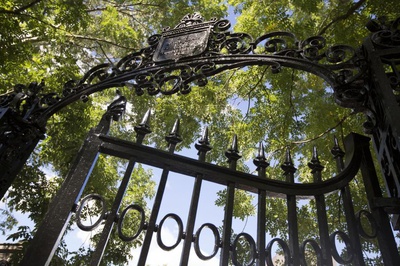
News
Harvard Researchers Develop AI-Driven Framework To Study Social Interactions, A Step Forward for Autism Research

News
Harvard Innovation Labs Announces 25 President’s Innovation Challenge Finalists

News
Graduate Student Council To Vote on Meeting Attendance Policy

News
Pop Hits and Politics: At Yardfest, Students Dance to Bedingfield and a Student Band Condemns Trump

News
Billionaire Investor Gerald Chan Under Scrutiny for Neglect of Historic Harvard Square Theater
New Details Emerge in Case of Primate Death at HMS
New details have been released regarding the death of a primate in a Harvard Medical School research lab in October 2011.
The primate, which has been identified as a marmoset, died in the New England Primate Research Center in Southborough, Mass. after escaping from its cage, being caught with a net by NEPRC staff, and undergoing an imaging procedure.
The marmoset was being used for research on aging, according to John J. Pippin ’71, director of academic affairs for the Physicians Committee for Responsible Medicine, a non-profit organization that advocates for alternatives to animal research.
The marmoset was among the five primates that died in the past 21 months at the NEPRC, which recently received a citation from the U.S. Department of Agriculture concerning the death of a cotton-top tamarin monkey in February.
Dean P. Jones, a professor of medicine at Emory University and the lead researcher of the project involving the marmoset, confirmed the details which Pippin had found on the U.S. Department of Health and Human Services website.
According to Jones, the NEPRC study aims to learn more about how the body’s chemistry changes as it ages so that researchers can ultimately find solutions to the physical frailty that comes with aging.
Jones said that marmosets’ life span, typically 15 years, allows researchers to study chemical changes from marmosets’ birth to their death in a shorter time period than is possible with humans. Jones said the study is observational and not harmful to the animals. To collect data, researchers place marmosets, which are native to South America and grow to about eight inches long, in tubes to prevent movement while they are scanned with an EchoMRI machine, a medical device that provides body composition analysis.
But Pippin said that he believes the marmoset’s death is “part of a pattern of lax oversight and faulty protocol and poor performance that is characteristic of the NEPRC.”
Pippin pointed to observational research being conducted on humans at Washington University in St. Louis, Tufts University, and the Pennington Biomedical Research Center as evidence that the use of animals is unnecessary.
Pippin also released a Nov. 29 letter sent to the National Institutes of Health by Richard G. Mills, executive dean for administration of the HMS Institutional Animal Care and Use Committee.
In the letter, which was obtained under the guidelines of the Freedom of Information Act, Mills acknowledged the “corrective actions” recommended by a HMS IACUC subcommittee.
The letter recommends that researchers also submit additional information including a plan “to address issues arising when an animal either escapes from its cage or appears to struggle in the tube,” as well as “a description of methods of placement, including alternate methods that may be used.”
After the animal’s death research was temporarily suspended until corrective steps were taken. Research has since resumed, according to Jones.
The Harvard Medical School declined to offer more details on the case.
“Humane and regulated use of non-human primates in medical research benefits humankind through countless lifesaving therapies and interventions that are developed through ethical research,” the Medical School said in a statement.
—Staff writer Nathalie R. Miraval can be reached at nmiraval@college.harvard.edu
Want to keep up with breaking news? Subscribe to our email newsletter.
From Our Advertisers

Over 300+ courses at prestigious colleges and universities in the US and UK are at your disposal.

Where you should have gotten your protein since 1998.

Serve as a proctor for Harvard Summer School (HSS) students, either in the Secondary School Program (SSP), General Program (GP), or Pre-College Program.

With an increasingly competitive Law School admissions process, it's important to understand what makes an applicant stand out.

Welcome to your one-stop gifting destination for men and women—it's like your neighborhood holiday shop, but way cooler.

HUSL seeks to create and empower a community of students who are seeking pathways into the Sports Business Industry.
